Usually, a web page contains more text and other content than what you can see on your screen without scrolling. If you take a screenshot of only the visible part, you might leave out some significant portions of the text of key images that you will need later. That’s why it’s a great idea to take some time to learn how to screenshot a whole page on a Windows computer or a Mac machine, ensuring you are prepared to deal with long-form content adequately.
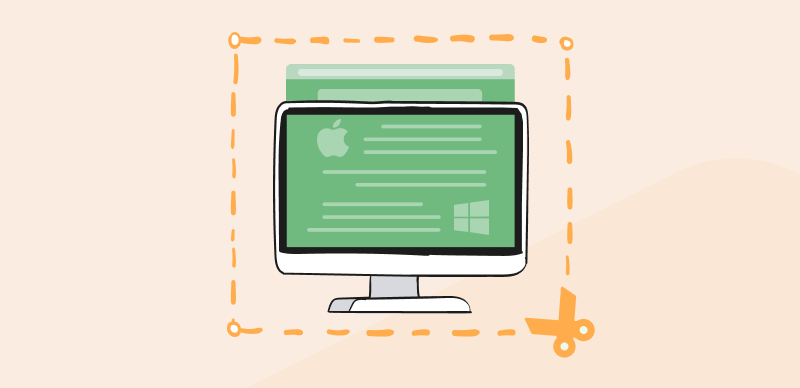
Take Full Page Screenshot on Mac and Windows
Depending on the type of OS your computer is using, you should choose the appropriate tool that will provide you with all the necessary functionalities without burdening you with technical complexities. This article presents several screenshot software tools suitable for this purpose that work on both Windows and Mac computers, so it contains useful knowledge for practically every computer owner. Here is a detailed overview of the best options at your disposal.
Table of Contents:
How to Screenshot Entire Pages on Mac and Windows
How to Screenshot Entire Page on Mac
Methods Quick View and Comparison
| Method | Quick-Step | Recommended |
| Developer Tools | Ctrl+Shift+I >Ctrl+Shift+P> Type “screenshot” >Select “Capture full-size screenshot”. | ⭐️⭐️⭐️ |
| Gemoo Snap Extension | Add Gemoo Snap to Chrome Extension >Log in >Click “Scrolling Capture”. | ⭐️⭐️⭐️⭐️⭐️ |
| Save as PDF | Select File>Print>Destination>Save as PDF>Save | ⭐️⭐️⭐️ |
| Command+Shift+5 | Press Command+Shift+5 to take a scrolling screenshot on your Mac | ⭐️⭐️⭐️⭐️ |
| Command+Shift+4 | Put browser in full-screen mode>Zoom out >Cmd+Shift+4>Click, and drag the cursor to capture the desired area | ⭐️⭐️ |
| QuickTime Player | Click File>New screen recording>Select Record entire screen, click to start, scroll content to include>Tap File > Stop screen recording | ⭐️⭐️⭐️ |
| PrtScn Key | Press Windows+Alt+PrtScn to take a screenshot on any browser | ⭐️⭐️⭐️⭐️ |
How to Screenshot Entire Pages on Mac and Windows
Using Developer Tools
Did you know that there is a hidden tool within Google Chrome that allows you to take screenshots of landing pages without extension and automatically save them to your device? Don’t worry, we have got you covered! This guide will provide you with the steps on how to take a full-page screenshot in Google Chrome with the Developer Tools:
Step 1. Open the webpage you want to capture.
Step 2. Press the Ctrl + Shift + I (on Windows) or Cmd + Opt + I (on Mac) on your keyboard to open the Chrome Developer Tools.
Step 3. Press the Ctrl + Shift + P (on Windows) or Cmd + shift + P (on Mac) on your keyboard to open the Command Menu.
Step 4. Type “Screenshot” after “Run >”.
Step 5. Choose “Capture full-size screenshot” and select it from the suggestions or use the arrow keys to navigate to it and press “Screenshot”.
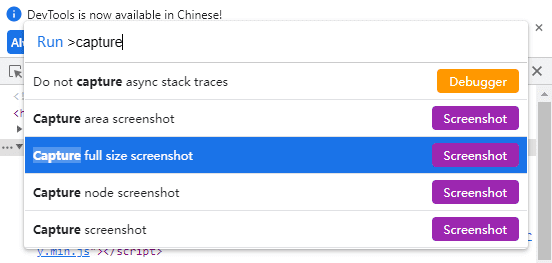
Capture Full-Size Screenshots in Chrome
Step 6. Wait for Chrome to capture the long screenshot.
Step 7. The screenshot will be downloaded automatically to your default download folder.
This method may not work for some web pages with certain functionalities or elements. In such cases, using a screenshot extension may be a better option.
Using Gemoo Snap
1. Desktop Software
Whether you want to capture part of the webpage or capture the entire webpage, Gemoo Snap, as a professional and one-stop screenshot tool, can meet various needs for capturing screenshots. And whether you’re a teacher, a designer, a developer, or a marketer, it has everything you need to take screenshots at work and in your daily life.
It can help you better to report a bug on the website, collect your favorite web pages by screenshot, or anything else. Here are Gemoo Snap Chrome Extension key features:
- Scrolling Capture – Take full-screen or specific areas on the Website or a chat window by scrolling screenshots, and stop at any point as you need.
- Screenshot a Portion of the screen – Capture the visible part, a selected area, or any element you want on a webpage.
- Screenshot & Beautify – Add context using text, lines, shapes, window mockups, backgrounds, and shadows. Redact sensitive content automatically.
- Quick Screenshot – Capture highlight moments instantly, and automatically save them to your computer or to cloud with shareable links.
- Clipboard Screenshot – Snip and annotate what you want to share, and copy it to the clipboard. Just paste it anywhere then.
- Recognize Text from Image (OCR) – Take a screenshot to extract uncopyable texts from images, videos, PDFs, or websites in seconds.
Step 1. Free download Gemoo Snap and launch it on your computer. Sign into your account > Open the window that you want to take a full-page screenshot.
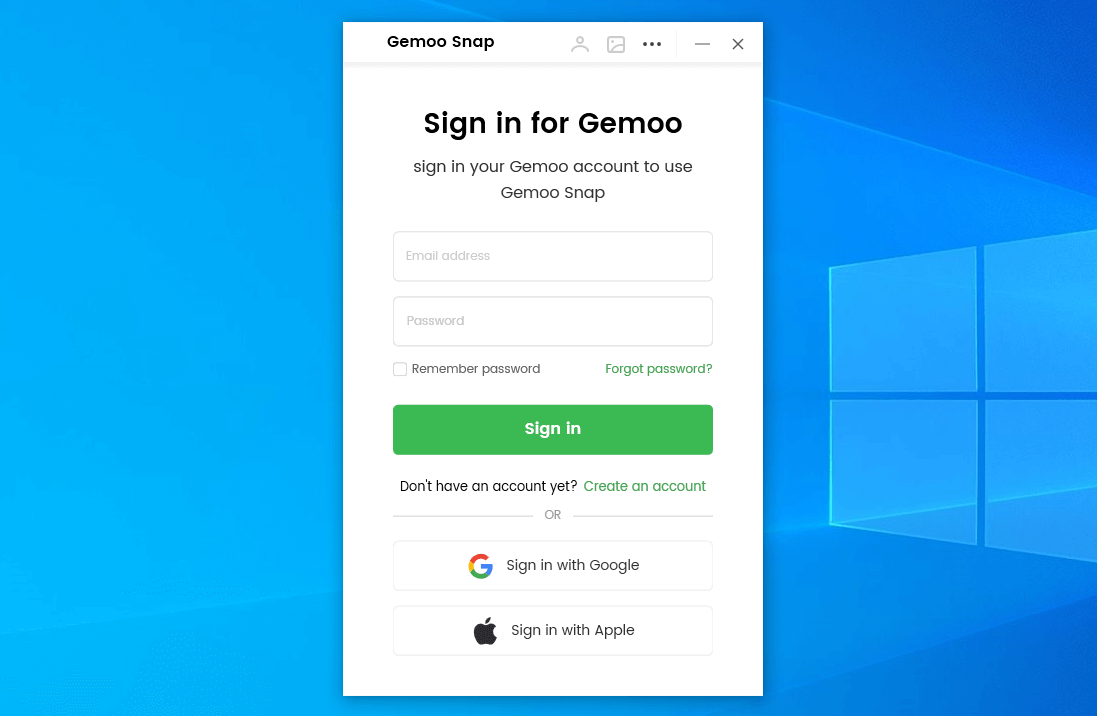
Sign in Account
Step 2. Choose the “Scrolling Screenshot” function.
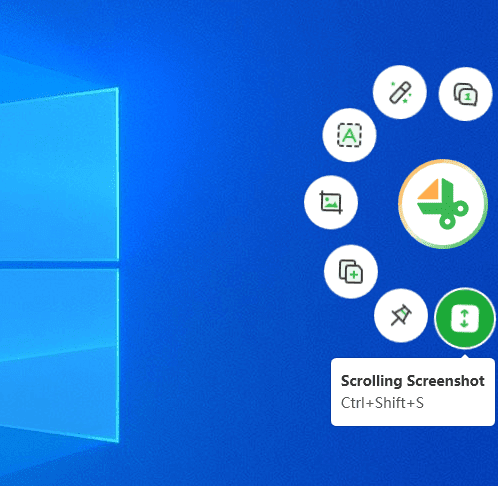
Select Scrolling Screenshot
Step 3. Choose “Auto scroll” or “Manual scroll” to take a full-page screenshot.

Two Scroll Options
2. Chrome Extension
If you just want to capture the full screen of the webpage and don’t want to download any software on your computer, then please follow the steps below to use the Gemoo Snap Chrome Extension to full-page screenshot.
- Capture Chrome Tab – Choose any Chrome tab or window that is opened to capture the visible part of the webpage in one click.
- Capture Element – You can capture any element you want on a webpage smartly.
Step 1. Install Gemoo Snap Chrome Extension on your Chrome first. Then, click the Extension button > Pin Gemoo Snap Chrome Extension on the toolbar.

Add to Chrome
Step 2. Click the Gemoo Snap Chrome Extension icon in the Chrome Extension bar. Then, please enter your account and password to log in Gemoo Snap Chrome Extension.
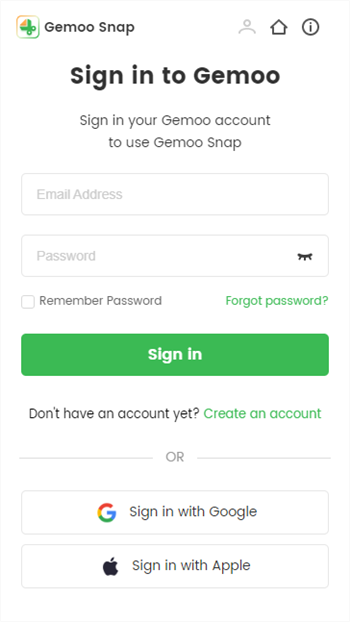
Sign In to Gemoo
Step 3. Now, you just need to choose the webpage that you want and click the “Scrolling Capture” mode. It will scroll and capture the whole webpage for you.
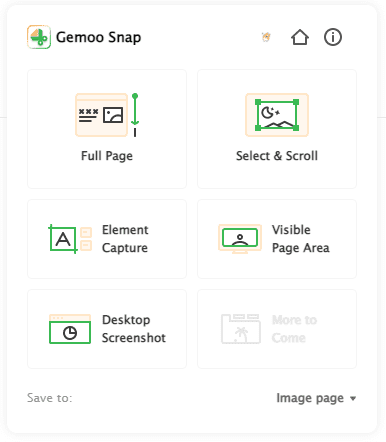
Gemoo Snap Extension
Save as PDF
If you only require a PDF-format full-screen screenshot, this approach is ideal for your needs:
- Locate the webpage you want to capture in Chrome.
- Select File option> Click the Print button (on Windows, press F11 if the menu bar is hidden or right-click on the webpage and choose Print…).
- Modify the Destination to Save it as PDF.
- Download the webpage by clicking on the Save button.
Further Reading: How to Fix Print Screen Button Not Working >
How to Screenshot Entire Page on Mac
If you would like to screenshot the whole page, there are many good apps and ways for you to take a screenshot on Mac, while, Mac also gives you a few reliable options to choose from. Here are the most convenient methods you can use to complete this action quickly and effectively:
With Built-in Function
Probably the easiest way to screenshot the entire page on your Mac computer is to use the built-in function that can be activated directly from the keyboard. Thanks to this practical option, you can capture the entire content of a webpage instantly and just continue to browse without skipping a beat.
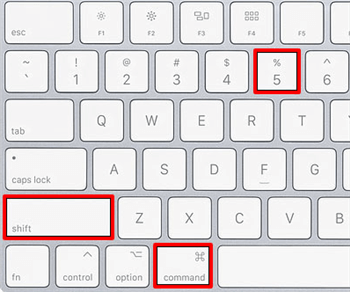
Screenshot an Entire Page on Mac
- Just press Command + Shift + 5 while you are on the page you want to save.
- Your Mac will create a scrolling screenshot that includes parts not currently visible on your screen.
This method has the advantage of not requiring any software downloads, but it can only be used to screenshot a webpage in a browser, not a page inside of an application.
With Hotkeys
We recommend this method if the webpage you want to capture is not that long.
- Open the webpage you want to capture.
- If the webpage is not visible in the browser, click on the double arrows to put the browser in full-screen mode.
- Hold down the Command key and press the minus sign (-) key to adjust the page until everything is visible without scrolling.
- Press Command+Shift+4 to activate the screenshot tool. A cursor will appear on the screen.
- Click and drag the cursor to highlight the area of the webpage you want to capture.
- Release the mouse button to take the screenshot. The captured image will be saved on your desktop.
With QuickTime Player
An alternative method for capturing the entire page on a Mac involves a software product that is most likely already present on your computer. QuickTime is a versatile application that a lot of Mac users rely on for managing and playing multimedia files, among other tasks. It can also be used to take a scrolling screenshot and save the entire page in one file that you can open and edit later.
Using the screen recording function to take full-page screenshots is very convenient for people who use QuickTime on a daily basis and are familiar with its commands, so they don’t have to learn any new procedures.
Here is what to do to take full page screenshot using QuickTime in just a few seconds:
Step 1. Run QuickTime Player on your Mac computer.
Step 2. Select File from the main menu, and click on the New screen recording feature.
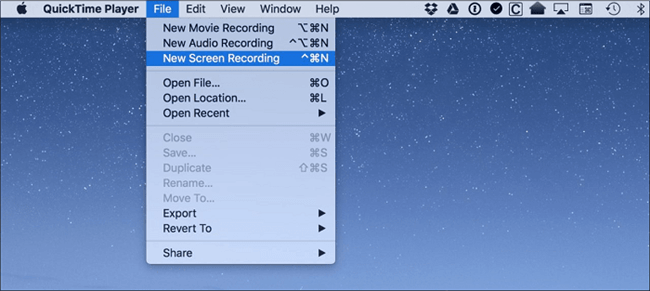
Click on the New Screen Recording Feature
Step 3. After you click the Record entire screen button, the mouse cursor will turn into a camera icon.
Step 4. Point the mouse cursor at the page you want to record and click anywhere to start recording.
Step 5. Scroll over the entire content you would like to include in the screenshot.
Step 6. Go to the File menu again, and choose Stop screen recording to end the operation.
How to Screenshot Whole Page on Windows
Anyone interested in how to take full-page screenshots on Windows 10 should know there is also a simple method available that requires no external software to be installed. PCs with this OS version have a built-in screen-grabbing tool that can be readily called upon whenever you need it.
By using a combination of keys on your keyboard, you can momentarily capture the entire content of a page that is currently open, with content that is underneath the scroll line included in the file.
- You need to press the Windows key together with Alt and PrtScn keys to produce this effect and make a screenshot.
- This combination of keys works from any browser, so you don’t have to worry about compatibility if you are just looking at how to take full page screenshots in Chrome and wouldn’t like to install any additional apps or browsers.
- Simply press those keys and hold them down at the same time for a few seconds, regardless of which application is currently open on your computer.
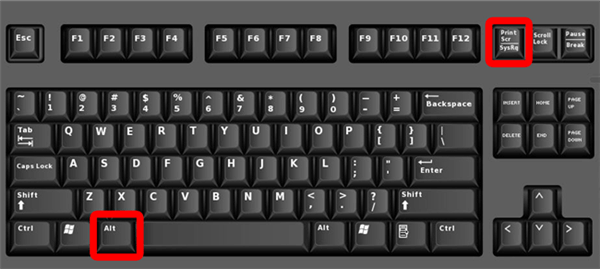
Screenshot the Whole Page on Windows 10
FAQs of How to Screenshot a Whole Page
1. What is the best Chrome extension for taking full-page screenshots?
There are several great Chrome extensions for taking full-page screenshots, including Full Page Screen Capture, Gemoo Snap Chrome Extension, Nimbus Screenshot & Screen Video Recorder, and Awesome Screenshot. It’s recommended to read reviews and try out different options to find the one that works best for you.
2. Can I edit or annotate my full-page screenshot in Chrome?
Yes, many screenshot extensions and tools allow you to edit or annotate your captured image directly in Chrome, such as Gemoo Snap Chrome Extension. You can annotate, mosaic, mark numbers, or text on the full-page screenshot with Gemoo Snap Extension.
3. Can I take a full-page screenshot of a website that requires login credentials?
If you want to take a full-page screenshot of a website that requires login credentials, it is important to first log in and then capture the screenshot. Make sure to check the website’s terms of service to ensure you are allowed to take screenshots. Some websites have security measures in place that may prevent screenshots or disallow them for certain pages.
4. How do I save a full-page screenshot in a different file format?
By default, Chrome saves full-page screenshots as PNG files. However, you can convert the file to a different format using an image editor or online converter tool. Some popular file formats for screenshots include JPEG, GIF, and BMP.
Final Words
Both Mac and Windows computers have a native option for this that only requires a combination of keys to be pressed simultaneously. If you master those combinations, you will be able to capture content from the entire page without any effort and just continue with whatever you may be doing at the moment. Alternatively, you could use QuickTime (on Mac) or another screen-capturing software to complete this task through a screen recording function and gain some additional editing and sharing capabilities.
